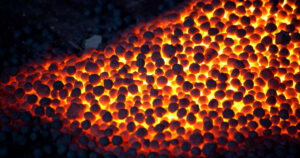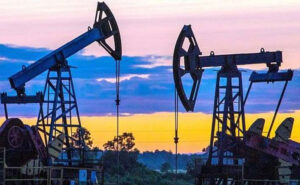
Ferrexpo plc, a mining company with major assets in Ukraine, produced 6 million 70.541 thousand tons of pellets in 2024, up 58% from 3 million 845.325 thousand tons in 2023.
According to a press release on Thursday, Ferrexpo produced 1 million 503.373 thousand tons of pellets in the fourth quarter of 2024, up 18% quarter-on-quarter (1 million 269.727 thousand tons).
At the same time, the total production of marketable products (pellets and iron ore concentrate) in 2024 increased by 66% compared to 2023, to 6 million 889.879 thousand tons from 4 million 152.028 thousand tons. In particular, the output of saleable concentrate amounted to 819,338 thousand tons compared to 306,703 thousand tons in 2023. The company also produced 489,720 thousand tons of DR pellets, 4 million 984,990 thousand tons of premium pellets and 595,831 thousand tons of other pellets.
The press release notes that during the fourth quarter, the group successfully operated two pelletizing lines (out of four) despite power outages, and paid special attention to the production of higher quality pellets and high-quality concentrate.
As of December 31, 2024, the group’s net cash position was approximately $99 million (December 31, 2023: $108 million) with minimal lease obligations, subject to possible adjustments at the end of the year, and no debt.
The company was re-admitted to the FTSE 250 index at the end of December.
Commenting on the group’s performance, Lucio Genovese, interim chairman, said that in 2024 the company had its best annual production performance since the start of the full-scale invasion in 2022.
“The increase in production reflects our ability to regain access to Ukraine’s Black Sea ports and resume exports to customers in the Middle East and North Africa (MENA) and Asia. In total, 37 ocean-going vessels were loaded in 2024, including 32 vessels from Ukraine and five from other ports, compared to only 19 (from Romania) in 2023. The higher level of production also reflects the flexibility we have built into the business, producing a wider range of products,” Genovese said.
He also emphasized one of the highlights of 2024 – a new annual record for DR pellets production. These higher quality pellets bring higher revenues to the company, which is especially important as the group continues to face high production costs.
In addition, production of high quality pellets and concentrate increased in the fourth quarter, which helped to reduce the fixed cost base as production levels increased.
“The group’s ability to produce a diverse range of products and sell them to a broader customer base has helped in the current environment. However, the continued impact of lower iron ore prices and higher raw material costs put pressure on profitability in the fourth quarter. Due to further attacks on Ukraine’s power grid, we continue to have to import electricity from the EU at higher tariffs,” Genovese emphasized.
As reported, Ferrexpo produced 3.845 million tons of pellets in 2023, down 36.5% from 2022.
Ferrexpo owns a 100% stake in Yeristovo Mining, 99.9% in Bilanivsky GOK and 100% in Poltava Mining.

Zaporozhkoks, one of Ukraine’s largest coke and chemical producers and part of Metinvest Group, increased blast furnace coke production by 2.1% year-on-year in 2024 to 874.7 thousand tons from 856.8 thousand tons.
According to the company, it produced 74.2 thousand tons of coke in December.
As reported, Zaporozhkoks increased its blast furnace coke output by 16% in 2023 compared to 2022, up to 856.8 thousand tons from 737.4 thousand tons.
“Zaporozhkoks produces about 10% of coke in Ukraine and has a full technological cycle of coke products processing. It also produces coke oven gas and pitch coke.
“Metinvest is a vertically integrated mining group of companies. Its major shareholders are SCM Group (71.24%) and Smart Holding (23.76%), which jointly manage the company.
Metinvest Holding LLC is the management company of Metinvest Group.

According to the results of 2024, the volume of natural gas production in Ukraine is estimated at 19.1 billion cubic meters, which is 400 million cubic meters more than in 2023 (18.7 billion cubic meters) and 600 million cubic meters more than in 2022 (18.5 billion cubic meters), said Artem Petrenko, Executive Director of the Association of Gas Producers of Ukraine (AGPU).
“According to preliminary estimates of our association, this year gas production in Ukraine will amount to about 19.1 billion cubic meters. Compared to 2023, we see an increase of more than 400 million cubic meters,” he said during an online meeting on the results of the year and prospects for the development of the energy sector of Ukraine at Energy Club on December 30.
According to the Executive Director, the positive trend of gas production growth in 2024 was ensured by both state-owned JSC Ukrgasvydobuvannya and PJSC Ukrnafta and private sector companies.
“Since August, the negative trend in private companies has been broken, and we have been recording an increase in gas production by private companies since August, and in five months they have managed to increase average daily gas production by more than 25%,” Petrenko said.
Also, according to preliminary data of the AGCU, more than 140 wells were drilled in Ukraine in 2024.
“This actually repeats the record-breaking year of 2023, when more than 150 wells were drilled. In total, over almost three years of full-scale invasion, gas producers have drilled more than 360 new wells,” the expert added.
According to him, since 2018, when the state provided incentives for drilling to Ukrainian gas producers, state and private companies have started drilling more than 720 wells in the country.
According to Petrenko, amid the ban on gas exports, Naftogaz of Ukraine continues to transparently buy gas on the Ukrainian Energy Exchange (UEEX) not only from producers but also from all market participants willing to sell gas on Naftogaz’s terms. According to the AGCU, since 2023, Naftogaz has purchased almost 2 billion cubic meters of gas at the UEEX.
“Under the conditions of closed exports, this is the only effective mechanism of cooperation between Naftogaz and participants, which is an incentive for private companies to increase gas production,” he emphasized.
At the same time, the Executive Director believes that in 2025, a negative factor for Ukrainian gas production will be the level of gas transmission tariffs, which the National Energy and Utilities Regulatory Commission (NEURC) increased for GTS Operator of Ukraine LLC by more than 4.5 times for internal entry points to the GTS starting January 1.
“This will affect not only state-owned companies but also private ones, as under the moratorium on gas price increases, it will reduce the investment opportunities of companies that they could direct to increase Ukrainian gas production,” Petrenko said.
As reported, gas transportation tariffs for internal entry points to the Ukrainian gas transmission system will increase 4.6 times from UAH 101.93 per 1 thousand cubic meters per day to UAH 464.37 per 1 thousand cubic meters per day starting January 1, 2025, and 4 times for external entry points, from UAH 124.16 per 1 thousand cubic meters per day to UAH 501.97 per 1 thousand cubic meters per day.

Blumi LLC (Odesa), a manufacturer of sanitary and hygienic paper products under the Snow Panda brand, produced UAH 369 million worth of products in January-November 2024, up 3.7% compared to the same period in 2023.
According to statistics provided by UkrPapir Association to Interfax-Ukraine, the company slowed the growth rate of this indicator in 10 months of 2024 compared to the same period in 2023, which was 10.3% in the first 10 months of the year.
In physical terms, the production of toilet paper increased by 5.5% to 43.8 million rolls.
As reported, over 11 months, the main Ukrainian producers of sanitary paper products produced 584.84 million rolls of toilet paper, up 4.5% year-on-year.
Bloomi, which was registered in 2014, produces pulp-based sanitary products (toilet paper, napkins, towels) from imported raw paper. The products are manufactured at the facilities of Omega Brokers PE, one of the leading Ukrainian manufacturers of detergents, disinfectants and sanitary products.
In 2023, the company almost doubled its production volume by 2022 to UAH 367.3 million.
The company is co-owned equally (25% each) by four Odesa-based entrepreneurs.

In January-November 2024, Ruta, a major Ukrainian manufacturer of sanitary and hygienic paper products, whose management company is VGP JSC (Lutsk), produced products worth UAH 1 billion 588 million, up 7.7% compared to the same period in 2023.
According to statistics provided by UkrPapir Association to Interfax-Ukraine, the company has thus slightly accelerated the positive dynamics of production volumes over the first 11 months of the year compared to the same period last year, which it reached in the first nine months.
In physical terms, the company’s production of toilet paper in rolls slightly exceeded the previous year’s figure and amounted to 121.68 million units, which remains the third best result in the industry after Kyiv Cardboard and Paper Mill (248 million units) and Kokhava Paper Mill (125 million units).
The company produces pulp-based sanitary and hygienic products from imported base paper.
VGP’s portfolio includes dry and wet wipes, toilet paper, paper handkerchiefs, and kitchen towels. The assortment includes more than 180 items.
As reported, in 2023, VGP JSC produced products worth UAH 1 billion 611 million, which is 64.8% more than in 2022.

Slavic Wallpaper-KFTP JSC (Koryukivka, Chernihiv region), a leading Ukrainian wallpaper producer, produced 15.37 million conventional pieces of wallpaper in January-November 2024, up 2.2% compared to the same period in 2023.
According to statistics provided by UkrPapir Association to Interfax-Ukraine, the company’s output growth rate for the first 11 months of the year was almost the same as in the same period last year: it was 2.3% in the first 10 months.
In monetary terms, the factory’s production increased by 1% to UAH 1 billion 168 million in January-November.
In November, the company produced 1.32 million units of wallpaper, up 1.2% compared to November 2023, but down 9.3% compared to October this year.
The Association does not have data on wallpaper production in Ukraine in general for 11 months of 2024, as the State Statistics Service has stopped providing it.
JSC Slavic Wallpaper-KFTP produces more than 10 types of wallpaper from the economy segment (paper, duplex, acrylic) to premium wallpaper (vinyl, non-woven, hot stamped), as well as its own latex, water-dispersion paint under the Latex brand.
As reported, in 2023, Slavic Wallpapers-KFTP increased its wallpaper production by 19% compared to 2022, to 16.2 million units, production volume increased by 38.2% to UAH 1 billion 249 million, and net profit increased almost eightfold to UAH 47.7 million.
Earlier, the company noted that as a result of Russian aggression, sales volumes have significantly decreased, especially through retail channels.